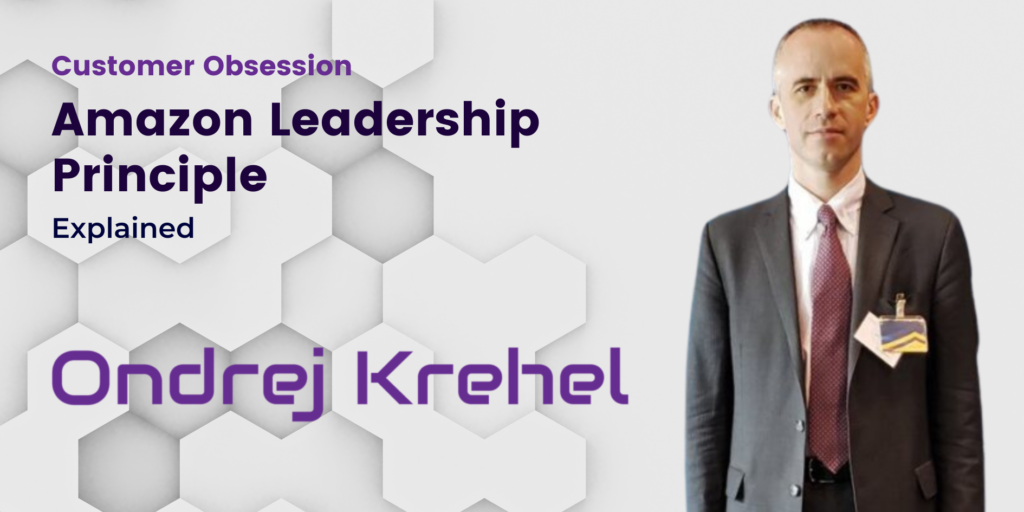What Is Customer Obsession?
Amazon Leadership Principle 1
Customer obsession is about obsessing over the customer. It is about caring for customers and always having their best interests in mind. If you want to work at Amazon, you need to be able to make decisions that will help the customer, even if they negatively impact something else. Customers should always be considered when making any crucial choices, and decisions should benefit them. Customers should always be prioritized. While competition with other companies is important, Amazon focuses more on the customer.
Customer Obsession in Interviews
In a job interview, candidates will be asked about how they helped the customer and what they did to show that they really cared about the customer. The importance of customer obsession can be seen through this quote:
“Leaders start with the customer and work backwards. They work vigorously to earn and keep customer trust. Although leaders pay attention to competitors, they obsess over customers.”
What Customer Obsession Looks Like
People who are obsessed with customers will:
- Look at the company through the eyes of the customer
- Gather data on what customers want
- Question if what they are doing will help the customer
- Encourage customers to give feedback
- Give products and solutions that impress the customers
- Fully prioritize the customers
How to Demonstrate Customer Obsession in Interviews
In an interview, you should show that you care about the customer by sharing stories that show how your actions positively affected the customer. You should also show that you do not follow orders so strictly that you miss the customers’ needs. You should show that you don’t just do the job you’re assigned, but that you work toward improving customer experience.
However, this does not mean you should always do work for the customer because one singular customer is not always right. You should be able to understand why that customer reached out and how you may be able to solve the problem.
Tips for Answering Customer Obsession Questions
To give a good answer in an interview for customer obsession, you should try to be specific. Amazon is not looking for general answers. You should give an example of a specific time when you did something that benefited the customer.
What matters to Amazon is doing the best possible job of improving customer service. All the work that Amazon does is to help the customer. You can count on being asked at least one question about customer obsession in an interview.
Sample Interview Questions on Customer Obsession
- “How do you honestly pursue customer feedback, not just solicit them for compliments?”
- “When you’re working with a large number of customers, it’s tricky to deliver excellent service to them all. How do you prioritize different customer needs?”
- “When was a time you had to balance the needs of the customer with the needs of the business? How did you approach the situation? What were your actions? What was the end result?”
- “How do you get an understanding of what the customer’s needs are?”
- “Tell me about a time you had to compromise in order to satisfy a customer.”
- “Give me an example of a change you implemented in your current team or organization to meet the needs of your customers. What has been the result?”
- “When do you think it’s ok to push back or say no to an unreasonable customer request?”
- “How do you wow your customers?”
Why Customer Obsession Matters at Amazon
When you answer questions like those about customer obsession, an interview panel will be looking for how you have shown that you go above and beyond for customers and how you did it. Customer obsession really just means that you honestly value the customer and work to improve the life of the customer, even if it includes making decisions that will benefit the customer but harm something else in the company, like sales or revenue. When Amazon has a meeting, there is often an empty chair to symbolize that there is someone else there – the customer.
Read More: Amazon Leadership Principle 2: Ownership

